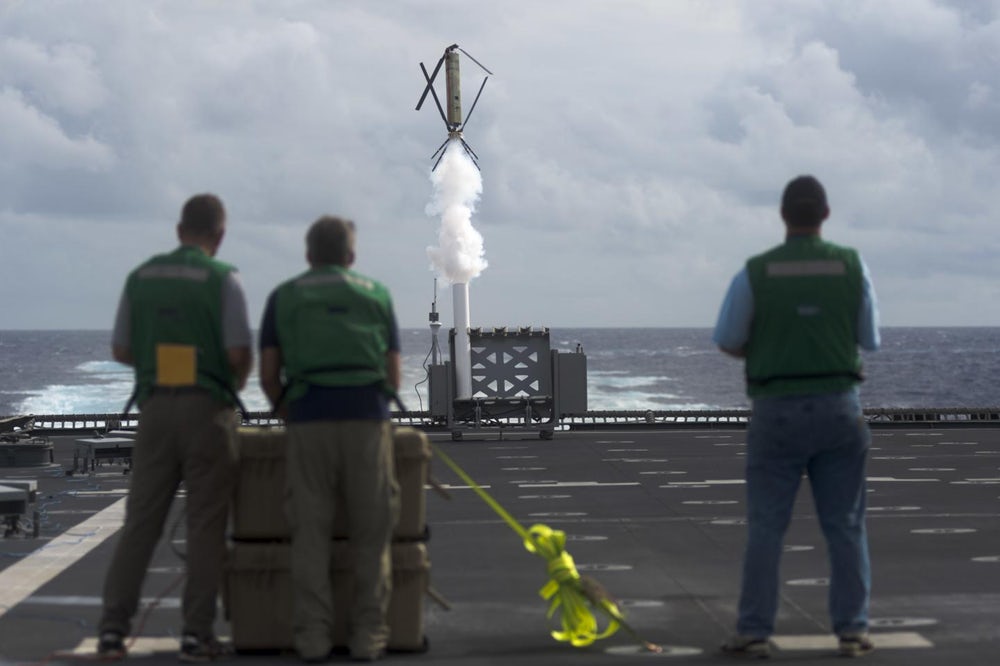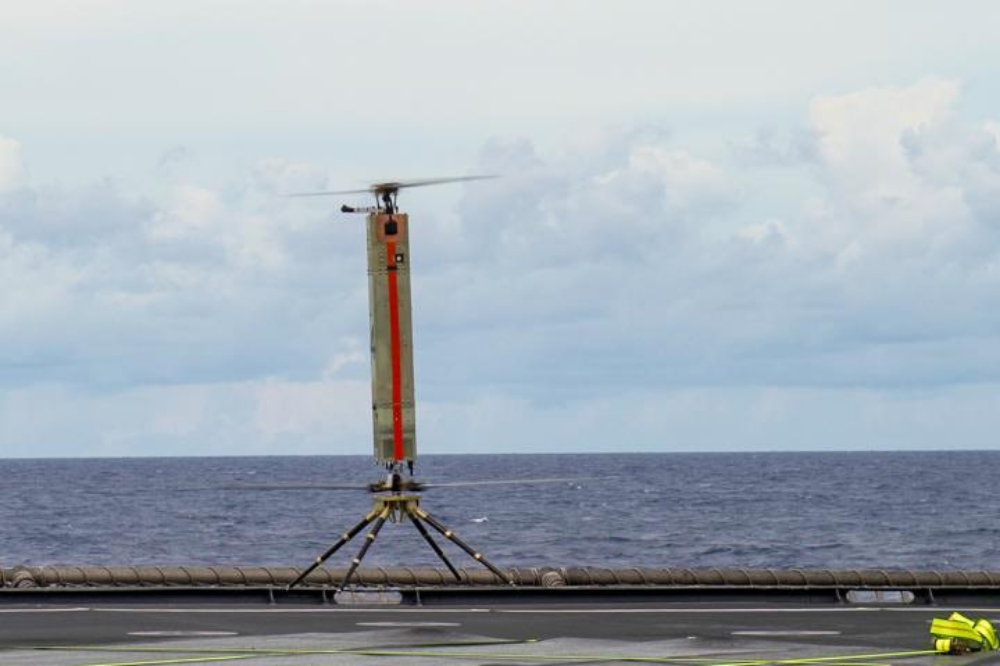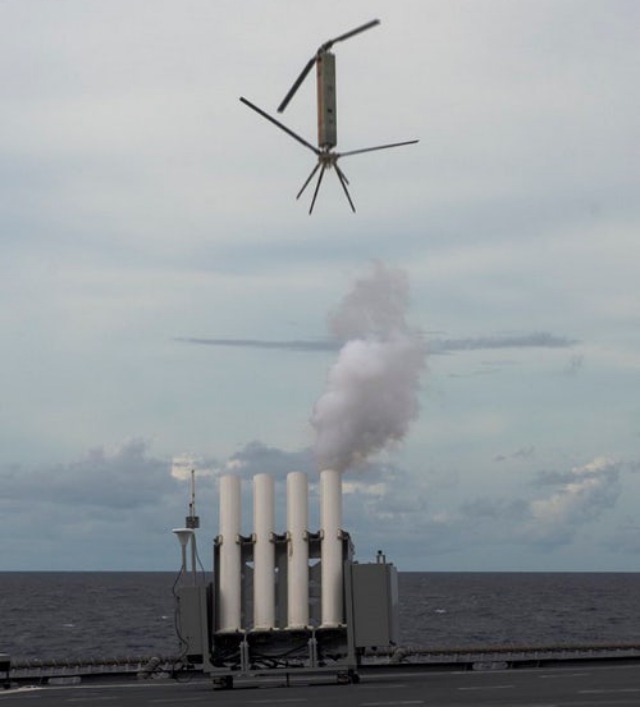
Civilian contractors from the Office of Naval Research conduct a test on the Nomad drone system aboard the littoral combat ship USS Coronado
Meet the Nomad. It travels well in a launch tube, a pair of rotors folded neatly along its long chassis, waiting to take flight. The unique design of this 3-foot-long unmanned aerial vehicle features counter-rotating coaxial rotors, which are pulled into place by torsion springs after being launched from its storage tube by a shot of compressed CO2.
Steven Tayman, a senior aerospace engineer at the Naval Research Laboratory, invented the Nomad for electronic warfare; the name Nomad is an acronym for netted offboard miniature active decoy, and it was designed to be used in small swarms that could confuse incoming missiles.
“Nomad is a low-cost rotary wing vehicle in which researchers can test remote control, autonomous flight control, station keeping, and safe coordinated flight supporting any number of possible future payloads,” Tayman said. “The unique form factor provides compact, lightweight storage in an integrated launch tube, and allows for storage in a ready-to-use condition for quick reaction deployment.”
As Tayman hints at in his statement, the Nomad can carry all sorts of sensors or packages, like a mast-mounted camera sitting above the top rotor like a head.

A Nomad drone lands on the flight deck of the littoral combat ship USS Coronado during testing in 2017
And with a U.S. patent pending that became public on October 4, businesses and entrepreneurs can potentially license the intellectual property, receive a technical data package from the Navy, and put the Nomad to use in other ways, or manufacture Nomads for commercial sales.
The Nomad’s patent application points out why its design is so awesome.
“Relative to other tube-launched equivalent fixed-wing options, the (Nomad) has more payload volume, ability to hover and station keep relative to slow-moving targets, and the ability to point independent of vehicle velocity,” it reads. “Compared to other tube-launched rotary-wing aircraft, (Nomads) have a larger more efficient rotor diameter, increased modularity, and can be deployed in higher relative winds and airspeeds due to the much larger rotor blade separation.”

During flight tests aboard the USS Coronado several Nomad UAVs demonstrated their ability to quickly launch and fly in formation
Could you repurpose the Nomad for other applications? This is a business opportunity for you.
“Licensing the Nomad and building it into a commercial product is possible through a special business process called technology transfer,” said Brian Metzger, senior technology manager at TechLink, the Department of Defense’s national partnership intermediary for technology transfer.
Through a patent license agreement, businesses and entrepreneurs, large and small, can acquire technical data and the intellectual property rights to Department of Defense inventions.
Drafting and submitting a patent license application, including a commercialization plan, is our core service, Metzger said.
The agreements contain financial terms paid by the licensee to the military lab, but TechLink’s services are provided to businesses at no cost.
“We’ve helped hundreds of companies understand the process of licensing DoD inventions,” Metzger said. “And the majority find it a lucrative decision.”
Photos: Kaleb R. Staples/Navy
Source: TechLink
